Jun 3, 2025 11:25 AM
In Memoriam: Al Foster, 1943–2025
Al Foster, a drummer regarded for his fluency across the bebop, post-bop and funk/fusion lineages of jazz, died May 28…
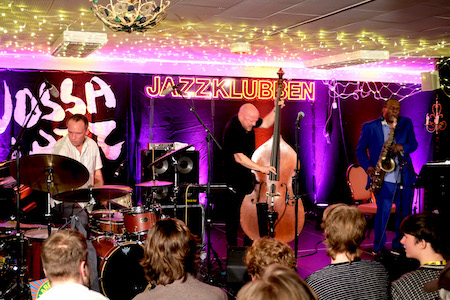
David Murray and his trio mates engage in a visceral yet sensitive blowout at this year’s Vossa Jazz Festival.
(Photo: Martin Brattvåg Dahl/Vossa Jazz)Last year, the Vossa Jazz Festival in Western Norway officially joined the rare ranks of jazz fests at 50. It is an august milestone in the still relatively young cultural terrain of jazz festival life, and this small, fruitful treasure of a festival continued its post-half-century mission with flair and purpose this year.
Long-time director Trude Storheim stepped away for a break after 16 solid years at the helm, her role currently taken over by Leila Melkevoll. The programming team wisely enlisted veteran Norwegian journalist Jan Granlie, who helped fortify the bonafide “jazz” aspect of the roster with David Murray’s trio featuring Norwegians Paal Nilssen-Love and Ingebrigt Håker Flaten and William Parker’s fervent and free-leaning “Mayan Space Station” trio — with outside guitarist du jour Ava Mendoza and drummer Gerald Cleaver — along with some Danish treats.
In Voss, more than many other Norwegian jazz festivals, the programming leans heavily towards Norwegian jazz, a fertile component of international jazz culture. But that tighter focus serves a valuable function, lending deserved spotlights on jazz and jazz-adjacent music of this unique region.
Beyond the generally strong and diverse programming in Voss, the place itself has a powerful allure. On the opening Friday afternoon, March 22, we could leave the small, tranquil lakefront town and head up the steep mountain in the epic funicular, serenaded by impressive music students from Trondheim. Climbing high to the popular ski area at the apex, we escaped the snowy chill in the Hangurstoppen lodge/cafe. There, the sizable ensemble Tell Us, down from the respected and adventurous Trondheim University NTNU, impressed with its notably original sound.
Two hours later, the official festival began with multi-inventive drummer/composer/conceptualist Øyunn’s conceptual music-with-film piece Aspects, an impressively distinctive project with echoes of Bjork’s art-rocking ventures.
One of this year’s musical and atmospheric highlights, Sigbjørn Apeland (pronounced OH-pe-land) gave a recital in the evocative 13th century church the Vangskyrkja. Performing first on the church’s antique organ and then on Apeland’s instrument of choice, the harmonium, the musician spun out hypnotic variations on hymn-like pieces and actual hymns, including Bach’s setting of “O Sacred Head, Now Wounded.” Apeland closed with a sweet sing-along of the popular lullaby “Fager kveldssol smiler.”
For stark contrast, I raced over to the Jazzklubben, one of several festival venues in the large, lake-facing Park Hotel. In that tightly packed basement-like space, Murray and his sympathetic trio mates were engaged in a visceral yet sensitive blowout and headbanger jazz delight. The tenor saxophonist, whose resume included partnership in the World Saxophone Quartet, has found ideal foils in the famed drum/bass powertrain of Nilssen-Love and Håker Flaten. Their empathetic interface and collective flexibility are well-known in another power trio, The Thing, with Mats Gustafson as the potent saxophone force on baritone. Murray sounded finer — by which we also mean expressively rougher — than usual in this good, game company.
Meanwhile, a very different kind of commanding tenor saxophone voice, Norwegian Marius Neset, was seizing another kind of room: the concert-adapted movie house known as Gamlekinoen. Arguably, Neset is one of the strongest and most fascinating young tenor players anywhere, with easy technical command and, more importantly, a ready flow of musical ideas and sure sense of how to build and shape a solo. His compositions also fascinate, often finding a happy medium of progressivism-odd meters, tricky turns and a prevailing melodicism. It’s a rare gift and balancing act that he pulls off.
At times, the crafty melodic side pushes him into a centrist mode, as with one tune heard in Voss that seemed to massage cliches from the dreaded “smooth jazz” realm. But the wily progressive in Neset led him to virtually deconstruct any sense of smoothness, with dazzling, abrupt left turns into sophisticated ensemble and harmonic deviations. Capping off his exciting set, Neset issued a captivating solo seemingly epitomizing the paradox of his unique talent: Call the solo a polished jewel in the rough.
Some of the more intimate and intriguing fare in Voss takes place in the Osasalen performance space of the Ole Bull Academy, a well-known institute for Norwegian folk music. On Sunday afternoon, for instance, the music ranged from fascinating, modernist and rigorous Estonian pianist Kirke Karja (in a trio with bassist Felix Henkelhausen and drummer-deserving-greater-recognition Ludwig Wanginger) and the invitingly lyrical, deceptively simple “chordless” quartet Miradelen.
This year, special attention also turned to notable Danish artists. Randi Pontoppidan has infused the art of solo voice performance (with subtle looping additives), ways somewhat reminiscent of the experimental Norwegian vocalist Sidsel Endresen. As heard in the recharged old 1906-vintage pastor’s home-turned-culture house of Kapelankåken, Pontoppidan has honed a vivid and elastic persona — or personae, given the in-the-moment vocal mosaic work making up her particular artistic voice.
Moving from the individual to the cracked collective spirit, Denmark’s large-ish Horse Orchestra deals in its own brand of postmodern party-timing horseplay. This seductively madcap merger of vintage and avant-garde jazz is led by pianist Jeppe Zeeberg, a prankster-ish but also fiendishly talented musician, as demonstrated in an impishly virtuosic solo piano performance in the Osasalen back in 2022.
A much-anticipated moment each year in Voss is the Saturday night unveiling of the Tingingsverk (“main commissioned work”), which this year was manifested in the fresh form of the fine saxophonist Hanna Paulsberg’s cheekily named “Do You Want My Job?” Paulsberg is a well-established voice worth hearing on the Norwegian jazz scene, and for this song set — inspired, she has said, by roots rock bands such as Little Village and more — she steered a robust but always tasteful band over melodic turf with enticing, cross-genre musical twists all along the way.
Fest-finale acts on the evening of March 24 included a tip of the hat to eminent singer Karin Krog, still coolly striking and expressive at 86 (with longtime comrade John Surman making a cameo), and a welcome return of the ever-taut and venturesome Bergen Big Band — heard here in past years fronting Neset, Django Bates and others. This year, the spotlight and new book of charts came thanks to the impressive saxophonist and whip-smart big band composer Shannon Mowday, from South Africa by way of Norway.
Let it be noted that, among other virtues on the menu in Voss this year, gifted women were well-represented. DB
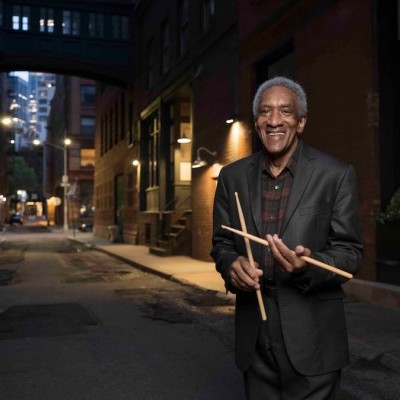
Foster was truly a drummer to the stars, including Miles Davis, Sonny Rollins and Joe Henderson.
Jun 3, 2025 11:25 AM
Al Foster, a drummer regarded for his fluency across the bebop, post-bop and funk/fusion lineages of jazz, died May 28…
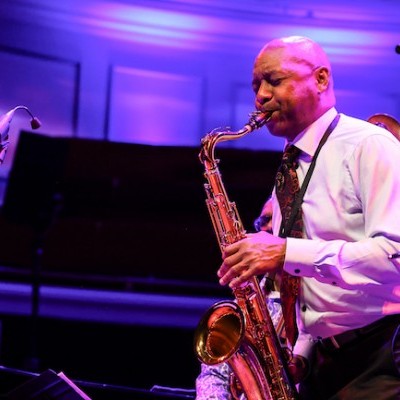
“Branford’s playing has steadily improved,” says younger brother Wynton Marsalis. “He’s just gotten more and more serious.”
May 20, 2025 11:58 AM
Branford Marsalis was on the road again. Coffee cup in hand, the saxophonist — sporting a gray hoodie and a look of…
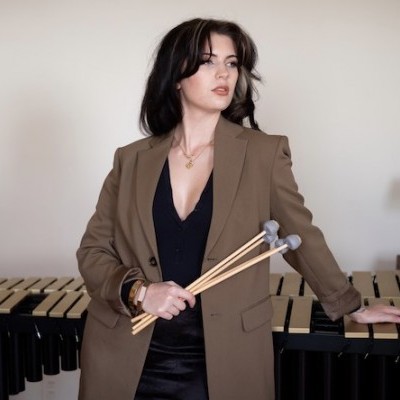
“What did I want more of when I was this age?” Sasha Berliner asks when she’s in her teaching mode.
May 13, 2025 12:39 PM
Part of the jazz vibraphone conversation since her late teens, Sasha Berliner has long come across as a fully formed…

Roscoe Mitchell will receive a Lifetime Achievement award at this year’s Vision Festival.
May 27, 2025 6:21 PM
Arts for Art has announced the full lineup for the 2025 Vision Festival, which will run June 2–7 at Roulette…
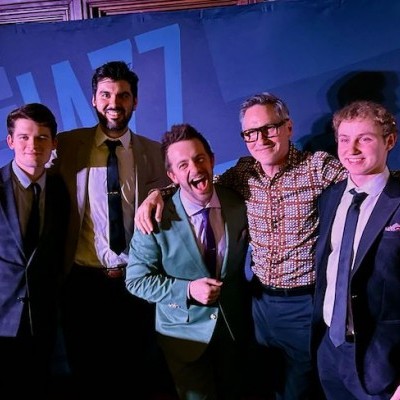
Benny Benack III and his quartet took the Midwest Jazz Collective’s route for a test run this spring.
Jun 3, 2025 10:31 AM
The time and labor required to tour is, for many musicians, daunting at best and prohibitive at worst. It’s hardly…